The article talks about pests of strawberries (garden strawberries) and ways to combat these pests.
General rules for protecting plants from pests
Using correct agricultural technology and following plant protection rules in your garden plots increases their resistance to diseases and pests.
- Planting healthy seedlings.
- Maintaining crop rotation.
- The return of plantings to their original place is no earlier than after 4-5 years.
- You should not place a strawberry plot next to crops with which it shares common pests.
Before planting, all purchased seedlings are subjected to heat treatment, immersing them entirely in water at a temperature of 50 ° C for 15 minutes.
How to deal with strawberry pests
The most dangerous are considered to be the strawberry (transparent) mite, the raspberry-strawberry weevil, the larvae of the May beetle, and naked slugs. Other strawberry pests do not cause as much damage to the plantation, although they are widespread.
Strawberry (transparent) mite
|
Larvae and adult insects feed on the juice of young strawberry leaves. |
Description. An extremely small pest that can only be seen under a microscope. Females overwinter at the base of the petioles; in the spring, one female lays up to 15 eggs. The pest generation develops in 30 days. Wet weather is favorable for tick reproduction. In such a summer they give 4-5 generations per season. In dry weather, ticks die.
Nature of damage. Strawberry leaves become smaller, yellow oily spots appear on them, and with a large number of pests, young leaves wrinkle. Bushes affected by mites become stunted, grow poorly, and have reduced productivity. Signs of damage appear especially strongly in the second half of summer, when the second wave of bush growth begins.
Measures to combat this pest. Spraying the bushes 2 weeks before flowering and after picking the berries with Karbofos (Fufanon), Inta-Vir, Aktellik, Sherpa. The sprayer is set to stream. When processing, young leaves are generously moistened, on which the bulk of mites collect. In bushes heavily infested with the pest, all leaves are mowed down and immediately burned, then sprayed over plant debris.In the future, strawberry plantations that have been attacked by the strawberry mite must be weeded especially carefully, since the pests live on many weeds.
The best protection against tick attacks is proper care at the beginning of the growing season. If there is no treatment in a humid summer, the mite can destroy the plantation. At the first signs of damage, you must immediately begin fighting this pest.
Raspberry-strawberry weevil
Description of the pest. The beetle is grayish-black in color, 2.5-3 mm long, the body is covered with thick light gray hairs. It has a thin, slightly curved proboscis and antennae. The larvae are legless, curved, grayish-white with sparse hairs. The beetles overwinter under plant debris of strawberries and raspberries. In spring they feed on young leaves, females lay eggs in buds. The larva developing inside the bud pupates there. The second generation of beetles appears in mid-July and feeds on leaves until autumn, and in September the pest leaves for the winter.
Nature of damage. The beetles feed on strawberry leaves, eating small holes in them, and gnaw at the stalks, causing the buds to break and fall off. Then the beetles fly to the raspberries, and after the latter has finished flowering, they return to the strawberries and feed on the young growing leaves. The larvae eat the buds from the inside. When the pest population is high, the yield of strawberries and raspberries decreases sharply.
Ways to fight. Spray plants twice in spring: when buds open and 2 weeks before flowering. If the weevil spreads strongly in summer, spraying is repeated. The insecticides Karbofos, Iskra, Inta-Vir, and Kinmiks are used. Biological preparations Nemabact and Antonem can also be used to combat weevils.
How to fight pests with folk remedies.
- During the flowering period, treat strawberry bushes with baking soda (2 tbsp. l/10 l of water).
- To repel beetles in the spring, when flower stalks appear, sprinkle the middle of each bush with ash or tobacco dust.
- In the evening, newspapers or cloth are spread under the bushes, and early in the morning, when the beetles are inactive, they are shaken off the plants and destroyed.
- Birch tar 3-4 caps are dissolved in 10 liters of water. Soap is added to the solution, which is an adhesive and serves to better retain the drug on the leaves. Spray in the morning in dry weather.
The disadvantage of all folk remedies is that they are easily washed off by rain or watering and the treatment must be repeated.
Prevention. Destruction of plant residues and loosening of rows.
May beetle larvae are one of the most dangerous pests of strawberries.
Description of the pest. In May, the female cockchafer lays up to 70 eggs in the soil to a depth of 10-15 cm, from which a small larva emerges after 25-30 days. It has a light, thick, curved body with 6 limbs in the front. The larva lives in the soil for 3-5 years, gradually growing to the size of a beetle. It is omnivorous, feeding on the roots of both cultivated plants and weeds. In the warm season, the pest lives on the roots of plants; in October, it goes deep into the soil for the winter. In places of mass distribution it produces a devastating effect.
Nature of damage. Strawberries are one of the favorite plants of the cockchafer larva. Small 1-2 year old larvae move along small roots to large ones inside the soil, and 3-5 year old ones can crawl from one plant to another along the surface of the ground. They eat the roots, causing the plant to die.
Treating strawberries against pests. Medicines Antikhrushch, Zemlin, Pochin, Vallar. They are scattered over the soil surface and then incorporated. The larvae cannot tolerate nitrogen, so to combat them, you can sow clover, beans, beans on the plot, or apply pure nitrogen fertilizers (urea, ammonium nitrate).
Protection against pests using folk remedies.
- Water the bushes with infusion of onion peels. To prepare it, 100 g of husk is poured into 10 liters of warm water and left for 3-5 days.
- Daily abundant watering of strawberry bushes for 3-4 days. The larvae really do not like high soil moisture and leave. But you need to remember that they will appear in another place where the ground is drier.
- 10-15 drops of an alcohol solution of iodine are diluted in 10 liters of water and watered over the plants.
- Plastic bottle traps are used in May to catch beetles. To do this, cut off the neck and fill the bottle with sweet water. They place it in places where beetles fly in large numbers (under trees, bushes, in a strawberry plot). Traps are checked every day.
- Mechanical collection of larvae. If the plant is wilted, it is dug up along with a lump of earth and inspected. The collected larvae are destroyed. Delay in digging up a wilted bush allows the pest to move onto a healthy plant.
It is very difficult to completely get rid of cockchafer larvae.
You can learn more about the fight against cockchafer larvae. read this article
Naked slugs are voracious strawberry pests
Description of the pest. Slugs are molluscs that do not have a shell. Their length can be from 40 to 150 mm, color from light gray to almost black. In some species the body tapers towards the end. The eggs overwinter under lumps of soil, and young individuals emerge from them in the spring. Over the summer, 2 generations of pests hatch.Slugs are more active at night and inactive during the day. When plants are damaged, they leave a characteristic mucous discharge. Wet weather promotes the reproduction of mollusks; it is very difficult to control the pest.
Nature of damage. They eat oblong holes on petioles, leaves, buds, and berries, leaving a silvery discharge. They cause enormous damage to the strawberry crop. They carry fungal infections.
Control measures.
- Hand picking and pest control.
- Thorough weeding of the strawberry plantation, removal of plant residues, boards, and covering materials.
- In wet weather, mulch the beds with sawdust or pine needles.
- They make protective strips by sprinkling the row spaces with something rough (sunflower seed husks, coarse sand, nut shells). You can sprinkle the row spacing with a substance that corrodes the body of mollusks (superphosphate - 5-8 g/m2 or freshly slaked lime 20 g/m2).
- Use of molluscicides: Slug eater, Thunderstorm, Anti-slug. The preparations are scattered on the soil surface. They are dangerous for pets and can accumulate in berries, so strawberries removed from bushes on which the drugs were used are thoroughly washed.
- The drug Ulicide is safer. It is also applied superficially.
Folk remedies.
- Corn flour is poured into a jar and placed between the rows. It is a treat and poison for slugs. The jar is periodically cleaned of dead shellfish.
- They make traps and bait. Cabbage leaves, wet boards, and rags are laid out in the evening between the beds and between the rows. In the morning, many slugs accumulate under them. They are collected and destroyed.
- Mustard. 10 dessert spoons of powder are diluted in a liter of water and watered the soil around the strawberry bushes, and also sprayed on the plants.
- Zelenka.10 ml are diluted in 10 liters of water and watered between the rows.
Prevention. Timely weeding of the plantation, thinning of thickened plantings, deep loosening in wet weather.
More details about the fight against these mollusks can be found in the article “How to deal with slugs in the garden”
Strawberry nematode
Description of the pest. Very small transparent worms with a cylindrical body, live and feed on the sap of plant tissues. The pest overwinters in the buds at the base of plants; in the spring, females lay eggs. The new generation develops in 12-15 days, after which the young females themselves begin to lay eggs. Over the summer, 8 generations of pests hatch. The highest breeding activity is observed in May-June.
Nature of damage. The nematode attacks the tissues and axils of strawberry leaves, buds, flowers and berries. There are three types of damage.
- “Cauliflower” - strawberry leaves become thickened, twisted, entire-edged, with short petioles; dense heads appear. The number of flowers decreases, they are underdeveloped, the petals become green.
- Redness - the petioles of the leaves become thinner, acquire a red-violet color, the leaves become leathery, without pubescence.
- “Shiltsa” - the leaf blades are eaten, only the central veins remain.
The berries become small, underdeveloped, and the bushes begin to lag in growth due to damage to the roots. It affects individual bushes, but if left untreated it can spread throughout the entire plot.
Signs of nematode damage are most pronounced in spring and early summer. During the period of foliage growth (May-early June), strawberry bushes are carefully examined for pest damage.
Control measures.
- Destruction of affected plants and weeds.The soil after diseased bushes is treated with bleach, 4% formaldehyde solution or 5% solution of ferrous sulfate.
- Akarina powder against wintering nematodes is scattered over the soil surface.
Prevention. Purchased planting material is disinfected by immersing it completely in hot water (50°C) and leaving it for 15 minutes. Compliance with crop rotation, careful weeding of the plot.
Do not place beds with onions, garlic, peas, beans, or plant potatoes next to the strawberry plantation, since the nematode also affects these crops.
Strawberry leaf roller
Description. The bushes are damaged by the caterpillar, which overwinters in a cobweb cocoon under plant debris and under the bark of trees. The front and rear ends of the pest's body are black. In the spring, the caterpillars emerge from the cocoon and feed on strawberry leaves. Having finished growing in late May-early June, they pupate between two intact leaves pulled together by a web. After 10-15 days, a butterfly emerges from the pupa, feeds on nectar and lays up to 100 eggs, placing them one at a time on fruits and leaves. The forewings of butterflies are brown-brown or dark gray, have several dark spots, light in the upper part. The hind wings are solid dark gray. After 10-12 days, the second generation of pests appears from the laid eggs and feeds until autumn. The leaf roller is omnivorous and damages many fruit trees and berry bushes.
Nature of damage. Young caterpillars feed in the lower part of the leaf, damaging it at the base of the midrib and gnawing holes of various sizes and shapes. Adult leaf rollers curl up the ends of the leaves and fasten them 2-3 pieces together with the inflorescence into a ball in which they feed. The second generation of caterpillars can sometimes feed on leaves without sticking them together.
How to treat strawberries against pests.
- Spraying bushes when the pest spreads with insecticides: Karbofos or its analogues (Fufanon, Kemifos), Bi-58 new, Rogor.
- You can use biological preparations Lepidocid, Bitoxibacillin. Do double treatment with an interval of 5-7 days.
- With a slight distribution, manual collection of caterpillars and pupae in curled strawberry leaves.
Folk methods of struggle.
- Traps are made to catch butterflies. 1/3 of kvass or fermented jam is poured into a 0.5-0.8 liter jar and placed on the plantation and under the trees. As the pest accumulates, the jars are cleaned.
- To combat caterpillars, use tobacco infusion. Pour 500 g of tobacco dust into 10 liters of hot water and leave for 2 days. Dilute the resulting solution 2 times, add 50 g of liquid soap per 10 liters as an adhesive and spray the plants. The treatment is carried out with a freshly prepared solution, observing safety precautions. If the solution comes into contact with skin, it may cause severe irritation.
Swamp armyworm
Description of the pest. Butterflies with dark pink or red wings, with a clear gray border around the edges. The caterpillars are large, up to 4 cm long, with a bright red head. The body has stripes of the same color and is covered with warts and bristles. Pupates in the surface layer of soil next to the plant.
Nature of damage. Caterpillars bite into plant tissue (in the rhizome of strawberries) and eat them from the inside, gnawing through passages. The plant dies. The difficulty in controlling the cutworm is that it is protected from the effects of drugs by the plant tissue.
Control measures. The armyworm spreads very quickly, so emergency measures are taken against the pest. Treatment of the plot with Decis, Fury, Phenaxin, Rovicur. Spraying is carried out in the center of the bush.
Prevention. Damaged plants are removed along with a lump of earth and burned, the ground is treated with bleach. Timely weeding of the plantation is a reliable prevention against this pest.
Strawberry sawfly
Description of the pest. The insect is black, 8-9 mm long, has a long, shiny body, and brown legs. The larva is dark green above, light green below with a grayish tint, and has a sharp boundary between the color of the back and sides. The disturbed larva curls into a ring. They overwinter in a transparent golden-brown cocoon in the soil. They pupate in the spring. The pupae are initially light green, but turn black before the insect emerges. Females lay eggs on young strawberry leaves on the upper side, leaving characteristic brown notches. Over the summer, 3 generations of sawflies hatch. The larvae of the last generation of pests feed until late autumn, then go to winter.
Nature of damage. They damage strawberries, roses and rose hips. The larvae from the underside of the leaves first gnaw out individual sections of the leaf, and then gnaw holes of various shapes. The sawfly can completely destroy young strawberry leaves.
How to deal with a pest. The most effective way of control is to spray the bushes at the beginning of budding and after picking the berries with Inta-Vir, Actellik, Kinmiks, Iskra Karbofos. When spraying in summer, the waiting period (the interval between spraying with the drug and harvesting the berries) is observed for remontant strawberries.
Prevention. Loosening the soil, killing weeds.
The best way to combat strawberry pests is to use proper agricultural technology.
Other useful articles on growing strawberries:
- Strawberry care. The article describes in detail how to care for a strawberry plantation from early spring to late autumn.
- Strawberry diseases. Treatment of plants with chemicals and folk remedies.
- Strawberry propagation. How to propagate strawberry bushes yourself and what mistakes gardeners most often make.
- Growing strawberries from seeds. Is it worth it for ordinary summer residents to do this?
- The best varieties of strawberries with photos and descriptions. A selection of the newest, most productive and promising varieties.
- Growing strawberries in a greenhouse. Growing technology and all the pros and cons of this matter.
- Planting strawberries in open ground. Are you going to tackle strawberries? Then this is the very first article you need to read.


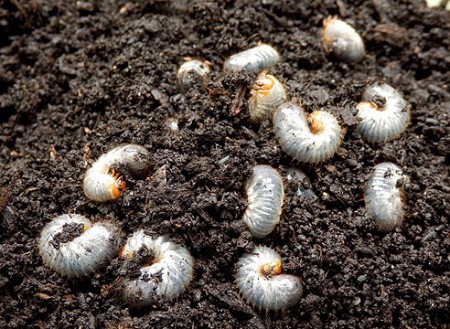
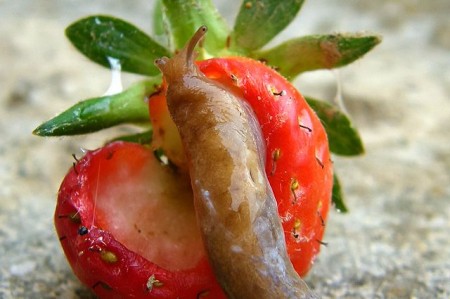
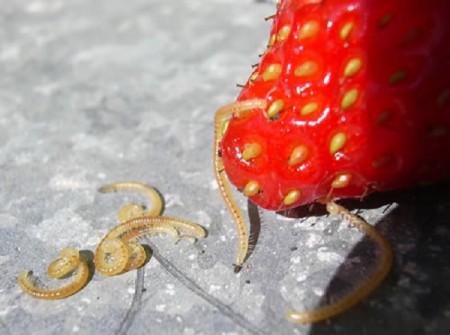
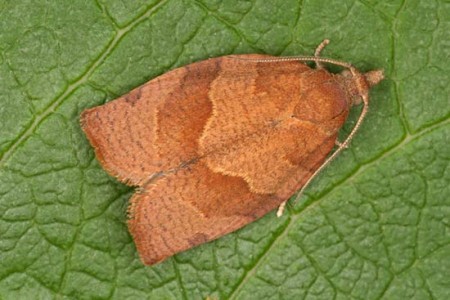
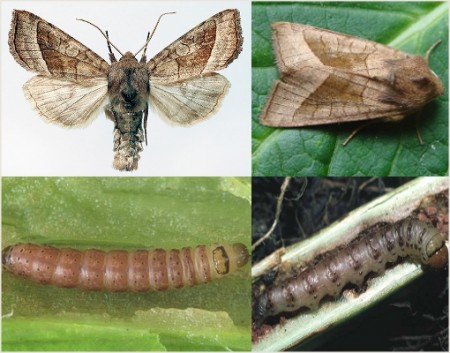
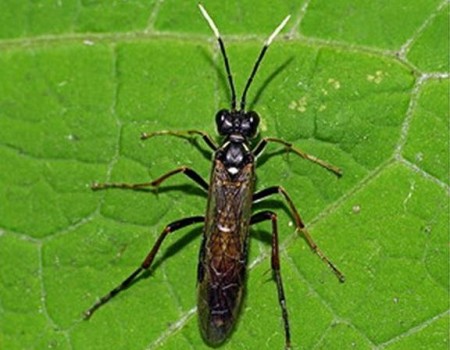


 (7 ratings, average: 3,86 out of 5)
(7 ratings, average: 3,86 out of 5) CUCUMBERS NEVER GET SICK, I'VE BEEN USING ONLY THIS FOR 40 YEARS! I SHARE A SECRET WITH YOU, CUCUMBERS ARE LIKE THE PICTURE!
CUCUMBERS NEVER GET SICK, I'VE BEEN USING ONLY THIS FOR 40 YEARS! I SHARE A SECRET WITH YOU, CUCUMBERS ARE LIKE THE PICTURE! You can dig a bucket of potatoes from each bush. Do you think these are fairy tales? Watch the video
You can dig a bucket of potatoes from each bush. Do you think these are fairy tales? Watch the video
 How our fellow gardeners work in Korea. There is a lot to learn and just fun to watch.
How our fellow gardeners work in Korea. There is a lot to learn and just fun to watch. Eye trainer. The author claims that with daily viewing, vision is restored. They don't charge money for views.
Eye trainer. The author claims that with daily viewing, vision is restored. They don't charge money for views. A 3-ingredient cake recipe in 30 minutes is better than Napoleon. Simple and very tasty.
A 3-ingredient cake recipe in 30 minutes is better than Napoleon. Simple and very tasty. Therapeutic exercises for cervical osteochondrosis. A complete set of exercises.
Therapeutic exercises for cervical osteochondrosis. A complete set of exercises. Which indoor plants match your zodiac sign?
Which indoor plants match your zodiac sign? What about them? Excursion to German dachas.
What about them? Excursion to German dachas.
What great articles, I started reading about the work in May, well, it’s just gorgeous, everything is explained, then I haven’t visited the site for a long time, now I remember, I started reading about strawberries again, I’ll definitely re-read all the articles, thank you!
And thank you, Svetlana, for your kind words. I am very glad that you found useful information on the site.
But if there are a lot of strawberries sticking out like lint, the length (3mm) is where the seeds of the berry are. What it is? You can see them in your picture from this article about the slug
This is not a disease, just a feature of the variety. On damaged berries, the villi dry out and become especially noticeable.